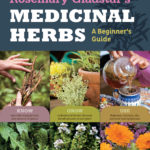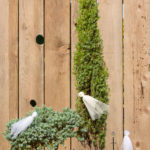Click here for full rules. Void where prohibited.

About the Book
A The New York Post Must Read Books for Spring
Before it was restored, the High Line was an untouched, abandoned landscape overgrown with wildflowers. Today it is much more than that; it’s a central plaza, a cultural center, a walkway, and a green retreat in a bustling city that is free for all to enjoy. But above all else, it is a beautiful, dynamic garden with plantings designed by Piet Oudolf, one of the world’s most extraordinary garden designers. Gardens of the High Line, by Piet Oudolf and Rick Darke, offers an in-depth view into the planting designs, plant palette, and maintenance of this landmark achievement. It reveals a four-season garden that is filled with native and exotic plants, drought-tolerant perennials, and grasses that thrive and spread. It also offers inspiration and advice to home gardeners and garden designers looking to recreate its iconic, naturalistic style. Featuring stunning photographs by Rick Darke and an introduction by Robert Hammond, the founder of the Friends of the High Line, this large-trim, photo-driven book is a must-have for anyone who appreciates the nature of design.
Buy the Book
Indiebound | B&N | Amazon | Workman
Piet Oudolf is among the world’s most innovative garden designers and a leading exponent of naturalistic planting, a style that takes inspiration from nature but employs artistic skill in creating planting schemes. Oudolf’s extensive work over 30 years of practice includes public and private gardens all over the world. He is best known for his work on the High Line and Battery Park in New York, the Lurie Garden in Chicago’s Millennium Park, Potters Field in London, and his own private garden at Hummelo in the Netherlands.
Rick Darke is a landscape design consultant, author, lecturer, and photographer based in Pennsylvania who blends art, ecology, and cultural geography in the creation and conservation of livable landscapes. Darke served on the staff of Longwood Gardens for twenty years, and in 1998 he received the Scientific Award of the American Horticultural Society.





No Comments